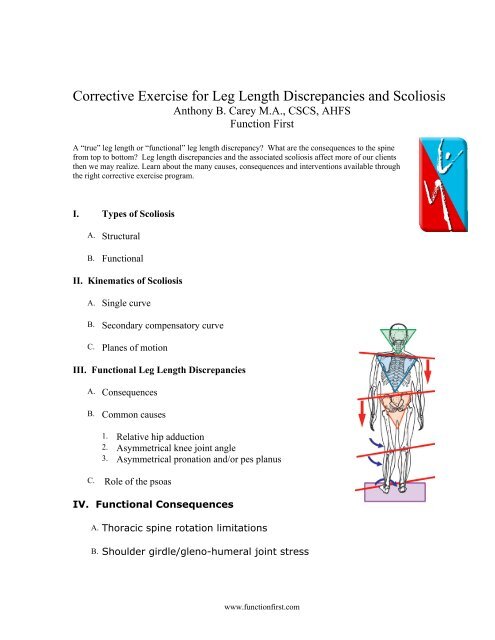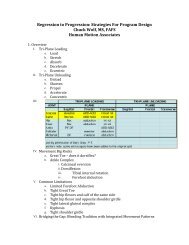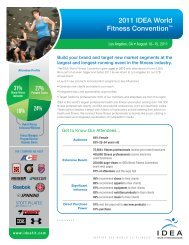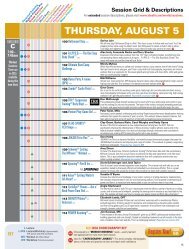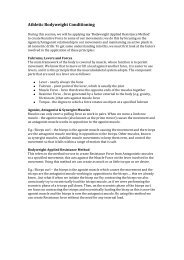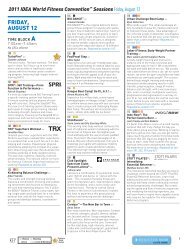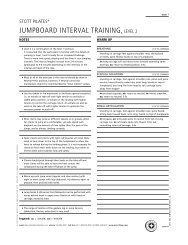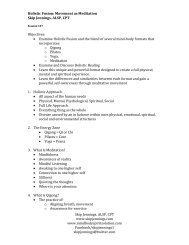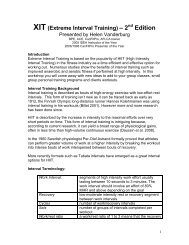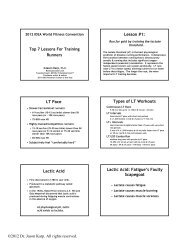Corrective Exercise for Leg Length Discrepancies and Scoliosis - Idea
Corrective Exercise for Leg Length Discrepancies and Scoliosis - Idea
Corrective Exercise for Leg Length Discrepancies and Scoliosis - Idea
You also want an ePaper? Increase the reach of your titles
YUMPU automatically turns print PDFs into web optimized ePapers that Google loves.
<strong>Corrective</strong> <strong>Exercise</strong> <strong>for</strong> <strong>Leg</strong> <strong>Length</strong> <strong>Discrepancies</strong> <strong>and</strong> <strong>Scoliosis</strong><br />
Anthony B. Carey M.A., CSCS, AHFS<br />
Function First<br />
A “true” leg length or “functional” leg length discrepancy? What are the consequences to the spine<br />
from top to bottom? <strong>Leg</strong> length discrepancies <strong>and</strong> the associated scoliosis affect more of our clients<br />
then we may realize. Learn about the many causes, consequences <strong>and</strong> interventions available through<br />
the right corrective exercise program.<br />
I. Types of <strong>Scoliosis</strong><br />
A. Structural<br />
B. Functional<br />
II. Kinematics of <strong>Scoliosis</strong><br />
A. Single curve<br />
B. Secondary compensatory curve<br />
C. Planes of motion<br />
III. Functional <strong>Leg</strong> <strong>Length</strong> <strong>Discrepancies</strong><br />
A. Consequences<br />
B. Common causes<br />
1. Relative hip adduction<br />
2. Asymmetrical knee joint angle<br />
3. Asymmetrical pronation <strong>and</strong>/or pes planus<br />
C. Role of the psoas<br />
IV. Functional Consequences<br />
A. Thoracic spine rotation limitations<br />
B. Shoulder girdle/gleno-humeral joint stress<br />
www.functionfirst.com
C. Cervical spine stress<br />
D. Lumbar instability <strong>and</strong> stress<br />
E. Asymmetrical weight bearing<br />
V. <strong>Corrective</strong> Intervention <strong>for</strong> Pelvic Obliquity<br />
www.functionfirst.com
II. Full Body <strong>Corrective</strong> Strategies<br />
A. Asymmetrical frontal plane movements<br />
B. Asymmetrical transverse plane movements<br />
C. <strong>Length</strong>en through the posterior chain<br />
Opposite Arm/<strong>Leg</strong> Gliding<br />
A-P Cat <strong>and</strong> Dog<br />
Lunge with Frontal Plus Transverse Reach<br />
Downward Facing Dog<br />
www.functionfirst.com
www.functionfirst.com<br />
Prepared by:<br />
Anthony B. Carey M.A., CSCS, AHFS<br />
Function First<br />
San Diego, Cali<strong>for</strong>nia<br />
Inventor of the Core-Tex<br />
acarey@functionfirst.com


